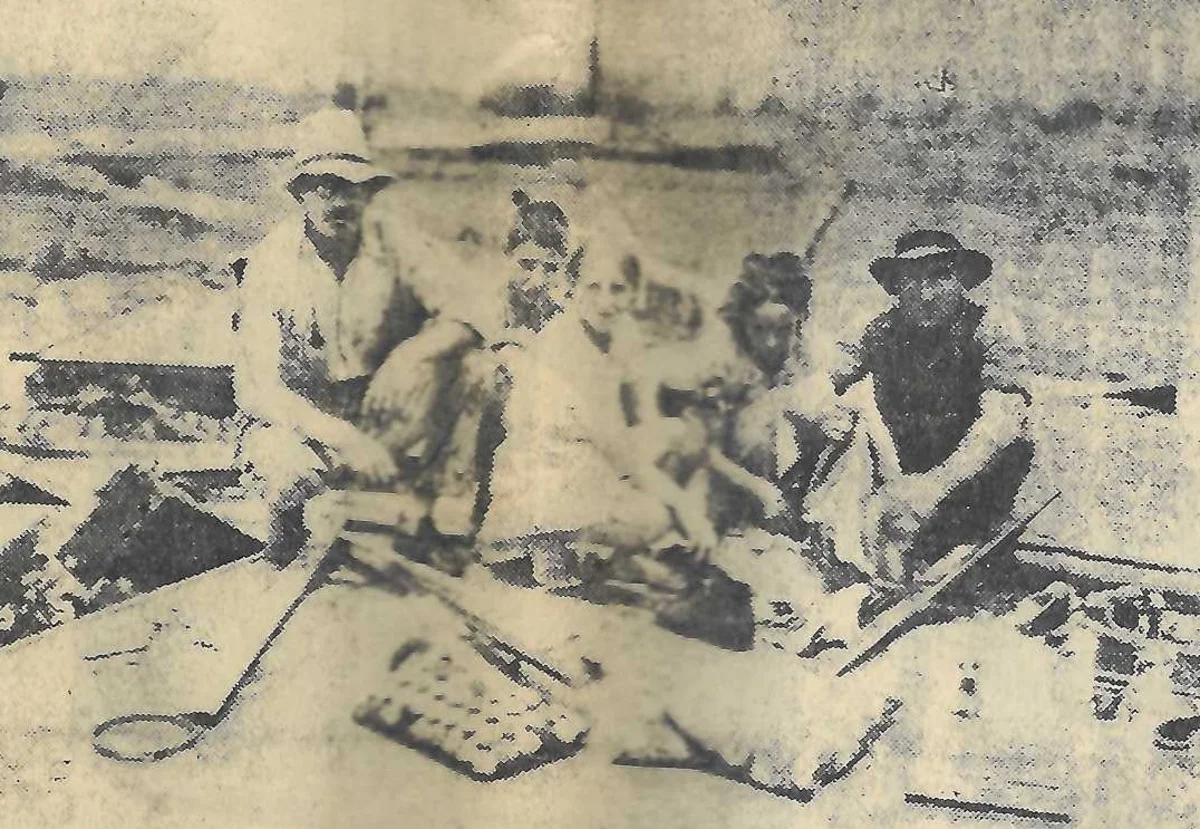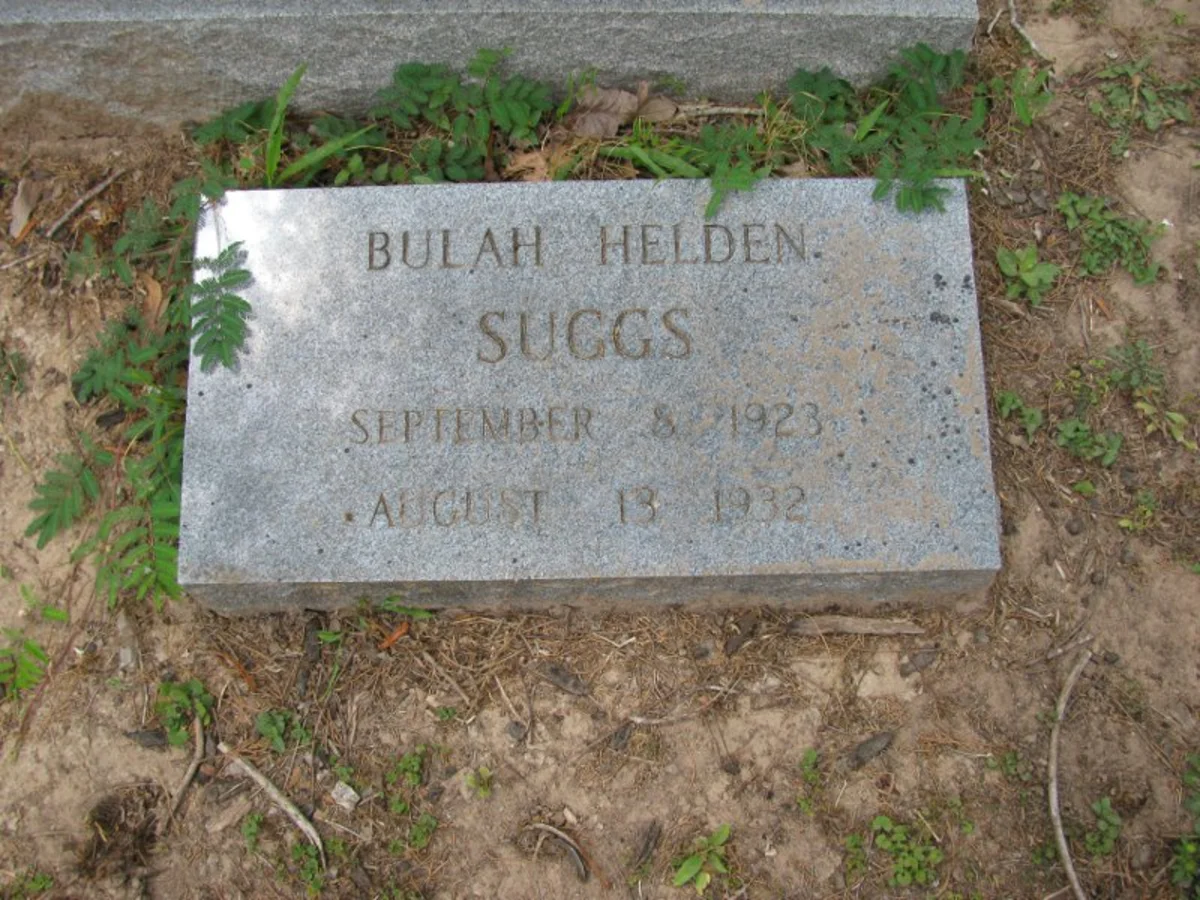![]()
By Tracy Gupton
While residents of the West Columbia area are still recovering from the severe damage and massive tree loss weeks after Hurricane Beryl tore a destructive path through this area of Southeast Texas, the loss of human life paled in comparison to the hurricane that struck the night of August 13, 1932, without ample warning. Prior to the invention of television when archaic weather forecasting gave residents mere hours instead of several days to prepare for impending doom, mass destruction and death hit West Columbia and the rest of Brazoria County when a hurricane ravaged the area.

“The ’32 Storm” claimed 40 lives of Brazoria County residents with at least nine people living in the Brazoria and West Columbia area dying from injuries sustained when the hurricane blew through on August 13th 92 years ago. The August 15, 1932, edition of The Brenham Banner-Press had a front-page headline that read, “Angleton Hardest Hit by Storm, 600 Families Are Homeless and Property Damage Is Very Heavy.” The Houston Post from that same day featured a similar story reading, “Even as it counted its dead, the hurricane ravaged coastal section centering around Angleton, Freeport and West Columbia Sunday began the tremendous task of rehabilitation under heartbreaking handicaps.”

Constable Henry Suggs of West Columbia and three other members of his family perished in the devastating storm. “The Suggs home, on the edge of West Columbia, was lifted by the wind, its occupants cringing in terror inside,” The Houston Post story read. “The flimsy frame structure was sent hurtling some 200 feet through the air and then was set down with terrific force, a mass of tangled and twisted wreckage. The lifeless bodies of Mr. and Mrs. Suggs, their child and Mrs. Suggs’ mother were hurled clear of the wreckage into a rain-soaked field. Just a hundred yards away stood the home of Ira Bell, a farmer. In the house were his wife and four members of the Crocker family, J.W., Frank, Bob and Pauline Crocker. About 10 p.m. one of the destructive gusts of wind which howled over the little community which was the cradle of the Texas Republic, sent the Bell home crashing to the ground in a roar of groaning, splintered timbers. The six occupants of the house were caught beneath heavy timbers, but through some whim of the storm they were spared.” The Post story went on to say that Ira Bell was able to free himself but was quickly knocked flat on the ground by 100 mile per hour winds. He was able to prevent himself from being swept away by clinging to heavy lumber. “Bracing himself against the force of the gale, he pulled other occupants of the house from beneath the debris. At last, the six persons who were in the house, men, women and children, were assembled together on the floor. They prostrated themselves on the bare boards, as a wild gale whistled over them, their faces flat on the timbers. We prayed to our Almighty God that night,” said Ira Bell to Houston Post reporter Max H. Jacobs.
We prayed and I know He heard us because He spared our lives.” Bell’s neighbors, the Suggs family, were not so lucky! “Later, when the dim light broke over the foreboding countryside, Ira Bell walked over to see how his neighbors, the Suggs family, had fared,” Jacobs wrote in his Houston Post story. “He found four bodies, horribly mangled, lying on the ground. A drenching rain was falling when he made the sad discovery, but he trudged through ankle-deep water and a 50-mile gale to West Columbia, where he obtained aid. The bodies were moved reverently to shelter.” The four members of the Suggs family who perished in the storm the night of August 13, 1932, were laid to rest at Columbia Cemetery. Their headstones can be seen near the front gates of the historic West Columbia cemetery along Jackson Street. The youngest victim, Bulah Helden Suggs, was only eight years old. Her grandmother, Orelaney Victoria Elizabeth Blocker Reed, was 72. Mrs. Reed’s daughter, Rosie Lee Reed Suggs, and her husband, Henry Monroe Suggs, were 45 and 47 respectively.
Two members of the Suggs family were spared the grisly deaths the hurricane caused by not being at the Suggs home outside West Columbia that night. Their son, John Suggs, was in Brazoria where he was working and living at the time, and their daughter, Hazel Suggs, 17 at the time, spent the night with a friend. The Houston Post story stated that “Hazel only Saturday afternoon decided to visit the home of a girl friend, some distance from her own residence. She remained there as the winds rose during the night. About 11 p.m. the house in which Hazel had taken refuge began to shake and groan before the blasts. All its occupants left in terror, fleeing through the night to the home of a neighbor. In a few moments the house came tumbling down.” The following morning John and Hazel Suggs reunited and shared the intense grief of learning that the rest of their family members had died the night before. “The ’32 Storm” also claimed the life of 25-year-old Eugene Giesecke of West Columbia who was struck by a piece of timber. He passed away the following afternoon from his severe injuries in a Houston hospital. The Houston Post story said that, “Nearly every building in the quiet little community of West Columbia was destroyed or damaged. West Columbia was badly in need of help in the form of water, food and clothing. Many families were homeless, and the structures which escaped destruction were damaged.” A tragic occurrence on this day in West Columbia history, 92 years ago! So, Hurricane Beryl wasn’t so bad after all!
The 1932 hurricane killed 40 people with the greatest single toll for any town in its path being seven deaths in West Columbia where sustained winds over 100 miles per hour flattened homes. The author of this story’s father, Rex Gupton, was 11 years old when he was caught up in his family’s home being totally destroyed by “The ’32 Storm,” which is what Rex and his siblings who lived through it always referred to that horrible hurricane that left them temporarily homeless. Rex Gupton was the son of S.M. “Buff” Gupton and Eulah Meadows Gupton of West Columbia. The four children–Ruby Nell, Rex, Hank and S.D.–moved in with their grandparents whose house nearby survived the terrible storm. Thurman Gupton, a close friend of Johnny Suggs and the eldest member of the Gupton family’s children, was already married in 1932. Thurman and his wife, Gladys, were living with Gladys Gupton’s mother, Mrs. Stucker, on East Bernard Street near the school where Mrs. Stucker was a high school teacher. Two neighborhoods that had been constructed for oil industry workers in West Columbia, which is where the Suggs family was living, were wiped out the night of August 13, 1932. Freeport, Angleton and Galveston suffered extensive wind damage while the inland towns of Brazoria, West Columbia, Damon and Needville, all in the path of the eye of “The ’32 Storm,” were also devastated. Official warning for the deadly storm came just four hours prior to landfall and many people trying to evacuate deeper inland had to abandon their cars in high winds and heavy rains.

Your right, after reading this article, Berl does not seem that bad!
Very informative article. We should count our blessings after Beryl!
My mother and Dad knew the Suggs family. They went through the storm in their business, Chesney’s Jewelry. My mother always talked about how scared they were through the storm.